Introduction
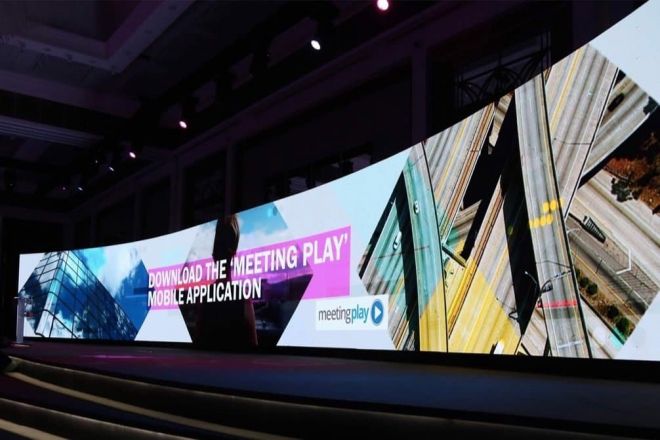
In the era of digitalization, visual communication technology, with its intuitive and vivid characteristics, is gradually becoming an indispensable information transmission tool in modern society. LED video walls, as an advanced display technology, have gradually become a shining star in the field of visual communication with their excellent display effect and wide range of application scenarios.
This article will give you an in-depth understanding of the LED video wall.
1. What is an LED video wall?
LED video wall is a display system composed of multiple direct-view LED displays. These LED displays work together as a unit to present a continuous stream of images or video content as if they were a single screen.
Each unit of the LED video wall can be designed into various special shapes, such as arc surfaces, circular surfaces, trapezoidal surfaces, or even 360-degree spheres, to meet the needs of different scenarios and applications.
Simply put, LED is a small part that can emit light by itself. Unlike traditional light bulbs, it has no filament, so it will not burn out or generate heat. The LED glows because the electrons inside are moving, like water.
The color of LEDs actually depends on the energy released when electrons move. In the LED video wall, in order to make the picture look more realistic, each LED is painted black, and shadows are added between them so that there is no light reflection, achieving “true black.”
2. Technical principles of LED video wall
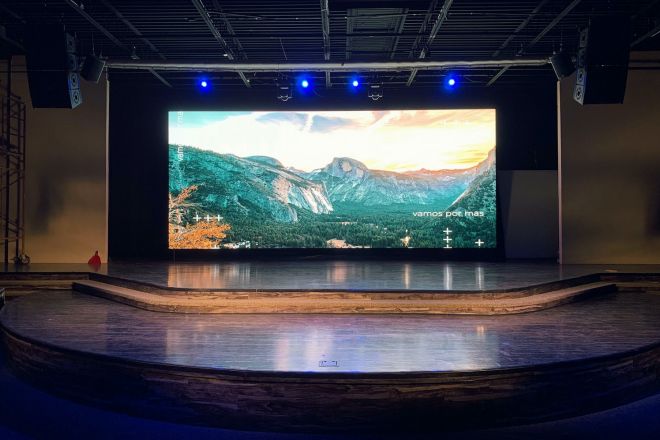
The technical principle of LED video walls is mainly based on the characteristics of LED (light-emitting diode) and display control technology. Simply put, an LED video wall is composed of countless LED lights, and each LED light can independently control its brightness and color.
By precisely controlling the brightness and color of these LED lights, a variety of images and videos can be displayed.
First of all, LED is a special semiconductor device that can directly convert electrical energy into light energy. The core of the LED is a PN junction.
When current passes through the PN junction, electrons and holes will recombine and release energy. This energy is expressed in the form of light. The color of LED light depends on the type and structure of its semiconductor material.
In an LED video wall, each LED light is considered a pixel. By controlling the brightness and color of each pixel, various images and videos can be displayed. This process requires the use of a technology called “display control.” Display control mainly includes two aspects: one is image processing, which is to process the image or video to be displayed and convert it into a format suitable for LED display; the other is drive control, which is to send the processed image or video data to each LED lights, control their brightness and color.
For example, if you have many small lights, each light can change color and brightness, and then you can control them to spell out various patterns, such as a smiley face, a heart shape, etc. The principle of LED video walls is the same. By controlling the brightness and color of countless LED lights, various images and videos can be displayed on the screen.
In order to achieve this process, LED video walls usually need to use a device called an “LED controller.” The LED controller can receive image or video data from a computer or other video source, then convert it into a format suitable for LED display and send it to each LED light. At the same time, the LED controller can also perform precise brightness and color control of each LED light to achieve high-quality display effects.
The LED controller is like a smart “brain.” It receives image or video data from a computer or other video sources and then converts these data into a “language” that the LED lights can understand, telling each LED light whether it should be on or off. Bright, what color should it be, and what is the brightness? In this way, all LED lights can work together to display a complete image or video.
3. Application areas of LED video walls
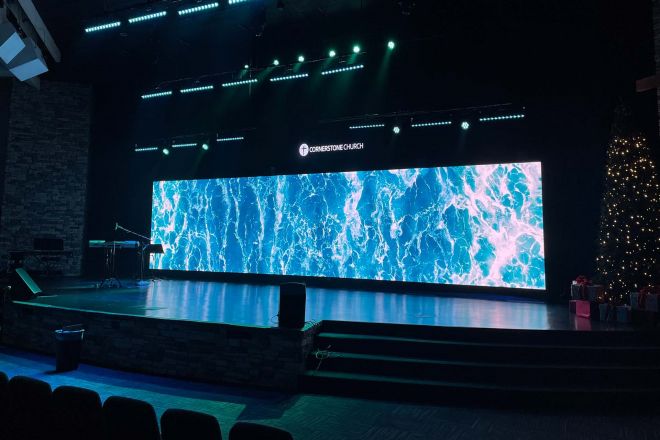
LED video walls are widely used in many fields because of their excellent display effects and flexibility. The following are the main application areas of LED video walls:
- Outdoor advertising media:
LED video walls are widely used in outdoor advertising. Due to its high brightness, high definition, and bright colors, LED video walls can attract the attention of pedestrians and become a highlight in the city.
Imagine that you are walking in a busy commercial district, and suddenly, a huge “wall” starts to play advertisements. The picture is clear, and the colors are bright as if you are there. This is the charm of the LED video wall! It not only attracts the attention of pedestrians but also makes the advertisement more vivid and interesting. Therefore, many brands choose to use LED video walls to display their products and attract more customers.
LED video walls can be seen in busy streets, shopping malls, squares, parks, landmark buildings, stations, airports, and other places.
- Stage performance:
Have you ever been to a big concert or party? Many of those shocking stage backgrounds are actually LED video walls. LED video walls have become an important element of many large-scale variety shows. It can change the picture according to the rhythm of the music, giving the audience an immersive feeling. Sometimes, the audience can’t even tell whether it’s a real person or an image on the screen. This is the magic of the LED video wall!
- Gym:
In sports venues, LED video walls are also widely used. It can display live information about the game and capture exciting moments, giving viewers a more immersive viewing experience. At the same time, the LED video wall can also be used in referee systems, timing and scoring systems, etc., to enhance the interactivity and viewing of the game.
- Commercial display:
In commercial places such as shopping malls and exhibition halls, LED video walls are also used to display corporate promotional materials, product information, etc. Its high resolution and bright colors can attract consumers’ attention and enhance brand image.
- Transportation hub:
In transportation hubs such as airports, train stations, subway stations, etc., LED video walls can be used to display flight information, train schedules, traffic conditions, etc., making it easier for passengers to obtain real-time information.
- Public Information Release:
LED video walls can also be used for public information releases, such as municipal squares, parks, hospitals, and other places. It can update information in real-time, such as weather forecasts, news flashes, etc., to provide citizens with convenient services.
4. Advantages and Challenges of LED Video Walls
1). Advantage:
Unparalleled visual effects: LED video walls bring stunning visual effects to users with their excellent color performance, high contrast, and clarity. Whether it is a static picture or a dynamic video, it can be perfectly displayed, making the audience feel as if they are actually there.
Highly flexible and customizable: LED video walls can be customized according to different needs and scenarios. From size and shape to resolution, they can be designed according to user needs. In addition, it can easily achieve special shapes, such as bends and arcs, providing unlimited possibilities for various applications.
Energy saving and environmental protection: Compared with traditional display technology, LED video walls are more energy efficient, and their long life means less replacement and repair, thus reducing the waste of resources and the burden on the environment.
Wide range of application fields: Whether it is commercial advertising, stage performances, sports venues, or public information release, LED video walls can give full play to their unique advantages and provide a high-quality visual experience for various occasions.
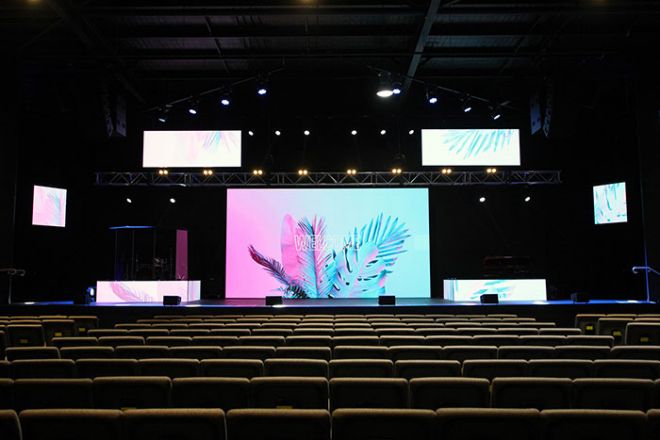
2). Challenge:
Cost issue: Although LED video walls have many advantages, their initial investment costs are relatively high, which may limit their application in certain areas.
Technical challenges: Although LED technology is quite mature, its stability and reliability may be affected in certain extreme environments, such as high temperatures and high humidity.
Maintenance and updates: Although LED video walls have a long lifespan, with the continuous advancement of technology, how to maintain and update these devices to ensure that they are always kept in the best condition is also a problem that needs to be faced.
Visual fatigue: Watching a high-brightness LED video wall for a long time may cause visual fatigue and even cause some damage to the eyes. Therefore, how to reasonably control brightness and color to reduce the impact on the audience’s eyes is also a problem that needs to be solved by LED video walls.
5. Development Trends of LED Video Walls
The development trend of LED video walls is reflected in progress and innovation in many aspects.
- Technological progress:
With the continuous development of technology, LED video walls will further improve their display effects and performance.
For example, indicators such as color reproduction capabilities, contrast, and brightness may be further optimized to make the display effect more realistic and delicate. In addition, with the improvement of chip technology and packaging technology, the life and stability of LED lights will also be improved.
- Intelligent and networked:
Future LED video walls will pay more attention to intelligent and networked applications. For example, by integrating artificial intelligence and big data technology, LED video walls can achieve more intelligent display control and content management.
At the same time, through connections with networks such as the Internet and the Internet of Things, LED video walls can achieve remote monitoring, control, and management, improving efficiency and convenience.
6. BIBILED's LED video wall recommendations
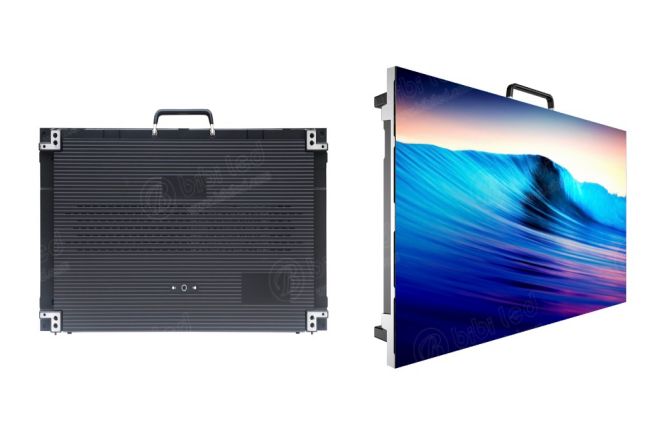
This is one of the outstanding products in the HD series “HD–Indoor High Definition Series.”
Advantage 1: Supports front and rear maintenance, making maintenance more convenient.
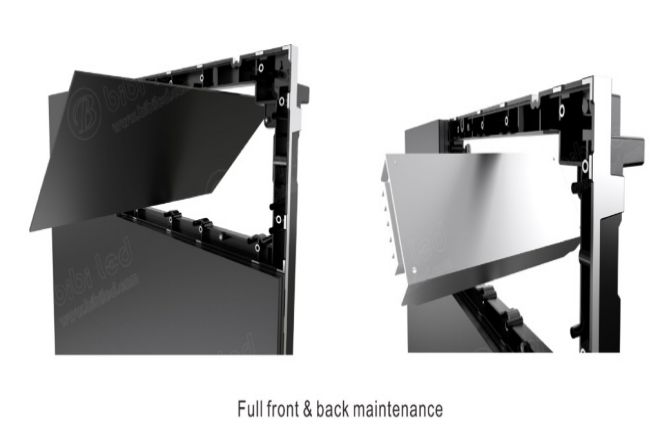
Advantage 2: Supports 2K, 4K, 8K. 16:9 point-to-point perfect splicing.
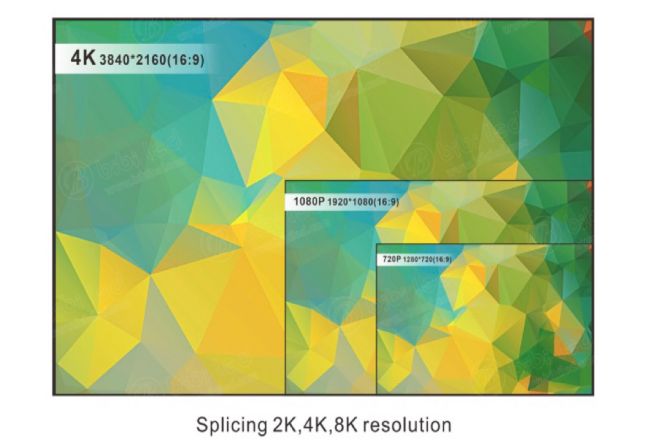
Advantage 3: Supports multiple installation methods.
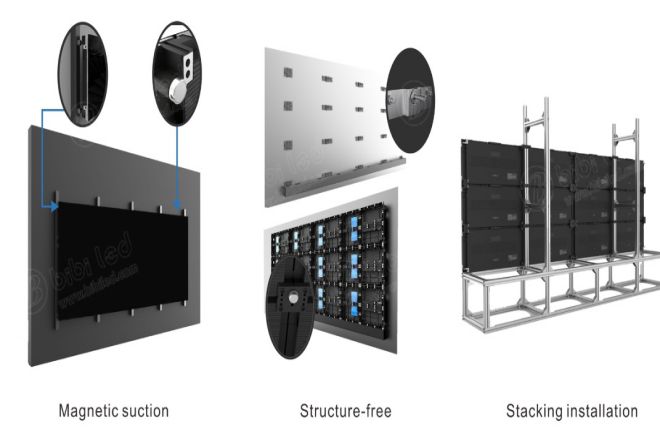
Conclusion
The above is the entire content of this article. If you need to know more about LED video walls, please get in touch with us!
